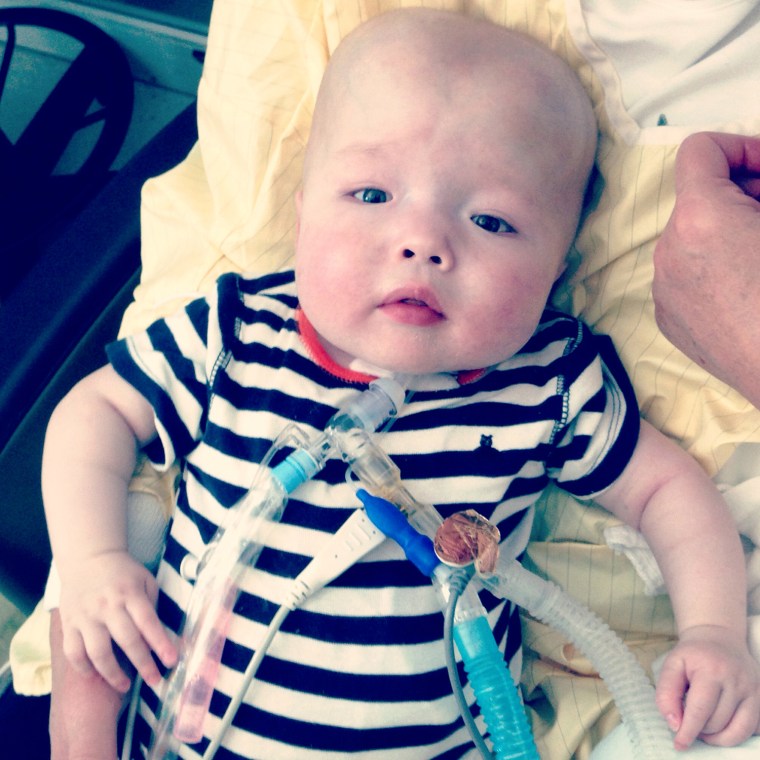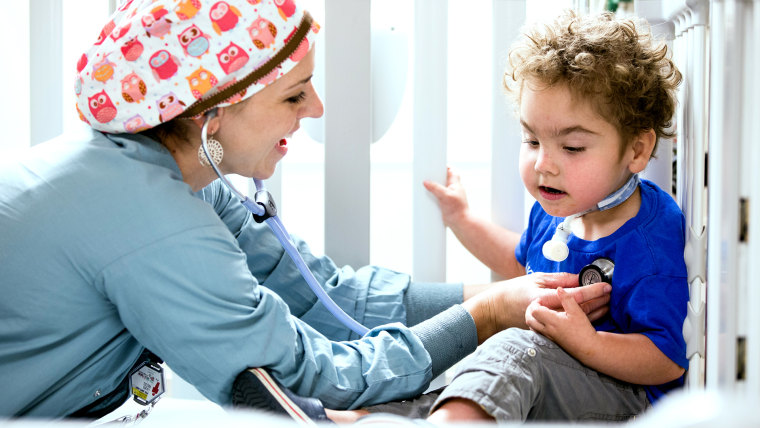Three small children with weak airways that were constantly collapsing are alive and well thanks to a “4-D” printed splint that saved them from almost certain suffocation.
Three years after the splints were custom made and attached to their tracheas, the children are able to breathe on their own, a team of doctors reported on Wednesday. The splints are not only precisely fitted to the children, but they’re made to grow as the children grow. (That’s the fourth dimension, the researchers say.)
Now they want to try their method in kids who are not so close to death, to see if the lab-printed splint can help them, also.
“Today, we see a way to cure a disease that has been killing children for generations,” said Dr. Glenn Green of the University of Michigan, who helped lead the work.
The children all had a rare condition called tracheobronchomalacia. It makes their airway walls weak and prone to collapse.
“It’s hard to convey how very sick these children were,” Green told reporters. “All of these children had been in the intensive care unit for several months. They all had tracheostomies where breathing tubes were placed in their necks.”
To tolerate this, these very small children were sedated, and sometimes even given paralyzing drugs to hold them still.

“There is no cure and life expectancies for each of these families were grim,” Green said. “Now these children are home with their families. These children are now learning to sit and stand and run as they are no longer sedated and paralyzed.”
Their report, published in the journal Science Translational Medicine, focuses on the device and how it works. It’s made out of materials used in surgery that the body naturally absorbs over time.
If children with tracheobronchomalacia can get to about age 3, they’ll usually outgrow the condition. It’s the very early years, when their already tiny tracheas can completely collapse, when they are most vulnerable.
“If the children are doing well at age 3, then we would expect them to do well for the rest of their lives,” Green said.
The team reports on the three kids: Kaiba Gionfriddo, whose story NBC News told after he became the first patient to benefit from the procedure in 2012; Garrett Peterson and Ian Orbich.
“The first time he was hospitalized, doctors told us he may not make it out,” Kaiba’s mom April Gionfriddo remembers. “It was scary knowing he was the first child to ever have this procedure, but it was our only choice and it saved his life.”
Now Kaiba’s 3 and in preschool. “The device worked better than we could have ever imagined,” Green said. “We have been able to successfully replicate this procedure and have been watching patients closely to see whether the device is doing what it was intended to do. We found that this treatment continues to prove to be a promising option for children facing this life-threatening condition that has no cure.”

Garrett Peterson is now 2 and off the ventilator. Ian Orbich, now 17 months old, can now play with his big brother, Owen.
“We were honestly terrified, just hoping that we were making the right decision,” his mother, Meghan Orbich, said. “I am thankful every single day that this splint was developed. It has meant our son’s life.”
Now the team wants to try the splint in a larger group of children who are not at risk of imminent death. They need Food and Drug Administration approval to do it.
“We have been meeting with the FDA and have a plan set up to have 30 children as part of a clinical trial,” Green said. They’ll compare children who get the splints right away to kids the same age who wait a few months to see if the splints help recovery.
It’s a fairly inexpensive procedure once a lab or hospital has the equipment, Green said. The cost of materials is only about $10.
The University of Michigan’s Dr. Robert Morrison, who designed the splint, said it’s designed to spread as the trachea grows. That ensures the splint doesn’t interfere with the natural growth that will eventually free the children of the condition.
“Our device allows the trachea to grow, in contrast to the fixed size of an artificial trachea,” Morrison said.
Doctors have also tried making artificial tracheas. Hannah Warren, who was born without a trachea and unable to breathe on her own, got one made from a frame that was seeded with stem cells. She died in 2013.